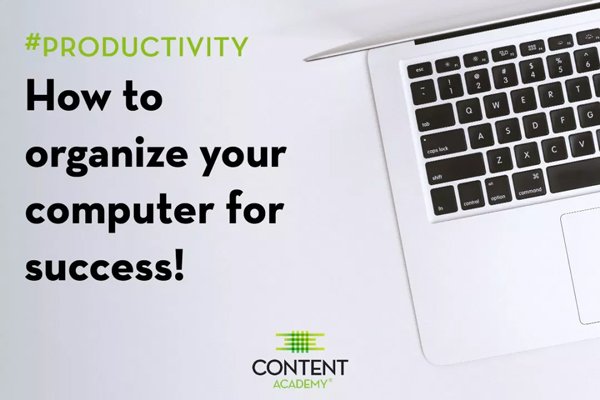Blogging & Content
The Ideal Blog Post

By: Scott Winterroth
September 1, 2018
There’s a strategy when it comes to creating blog content, from search engine optimization to copywriting and other storytelling techniques. On the Blog You Want in the Time You Have Podcast, I try to find my interviewee’s strategy behind their blog content by slipping in the question what is their ideal blog post. With little surprise the answer often comes down to, well it depends on what they are writing.
It seems that whenever I hold a blogging workshop, I always get asked how long should a blog post be and how often should I post something. Students are basically asking, what is the ideal blog post that will provide the best results. The truth is, it’s rather hard to provide spot answer to those types of questions because blog content is subjective and strategy can change rather quickly. What my readers and I think of as an ideal blog post may not be the same for you, your organization’s content strategy, or your community.
In this post, I thought it would be ideal to dig in and conceptualize my ideal blog post and why.
I understand why students ask how many words or how long is an ideal blog post. The average blog post takes approximately 3 hours and 20 minutes to write. According to the 2017 annual survey of 1000+ bloggers published by Orbit Media Studios.
Let’s face it, blogging and content creation requires a lot of time and patience. Two characteristics that most humans feel they lack at some level. Myself included.
Putting word count, SEO and all of the other marketing speak aside for a second, I want to share that my ideal blog post is about providing as much value to the reader as possible. Period. Whether that value is in the form of a how-to tip, a story that invokes reflection, a passage that makes a point, or a ditty that provides some type of entertainment to the audience I intend to read it. The ideal blog post is something that I would want to read as I know my time is valuable and I would expect to provide the same courtesy to others.
There’s nothing worse than finding a thin blog post or being dupped into a clickbait headline only to realize the post absolutely sucks. If you’re doing this type of smash-and-grab content marketing, please stop. You’re only hurting yourself or your client’s reputation.
Marketing is often the problem, when it comes to marketing with content there’s a level of expectation that if I’m going to invest the time into creating content then it must provide some type of return on my investment. To my boss or to my business. It’s not a bad philosophy to strive for but content marketing is not an immediate fix to anything. Those who do it well will most certainly agree that content marketing is a long game and requires a lot of time and content testing.
In order to achieve the ideal blog post, one can’t really proclaim a post is ideal for anyone until they first identify the ideal reader and become empathetic to what they want. Until the writer put themselves into their readers’ shoes, they can’t pass judgment on if their content is any good.
That’s really the answer, an ideal blog post varies depending on who you ask. In order to find that audience to attach to your content, you must first start publishing your best content in hopes that an ideal reader will find it.
That said, there are certain benchmarks that every content marker should consider before they start typing away.
Define your post objectives
Every ideal blog post starts with defined reader objectives.When I sit down to conceptualize and create content, I like to first consider three main objectives for my blog post. Consider these questions while planning your next blog post.
- Given the crowded mediums where I will share my post, what am I going to go above and beyond everyone else to drive attention to this post and entice a prospective consumer to want to read my content?
- How can we keep our consumer engaged while reading the content so they understand and act upon our message?
- What is our intended journey after they finish the post and hopefully engage with our call to actions?
Let’s not overthink it.
Depending on where you are at within your content creation journey. I don’t want readers of this post to stress on all of the ideal blog post requirements. There’s a lot that one can pour into creating a decent blog post, don’t let this overwhelm you. As I mentioned, this is what I consider an ideal ‘or perfect’ post but I’ll be the first to admit I’m not always able to achieve this every time. Often, I’m just happy to get something out. The more one creates and works towards building a sustainable system for marketing their products, the easier this will become. Just remember to start small and keep publishing.
If it’s going to take you more than 4 weeks to build the “perfect post,” then stop and rethink the strategy. Content Marketing is about getting content out and perfecting as you fine-tune your content creation muscles.
Blogging and content marketing has evolved plenty over the last several years and will continue to evolve. As I write this post, WordPress is on the cusp of launching a new visual editor called Gutenberg that will revolutionize how content creators publish content. Other online publishing platforms are doing the same and offering new ways for web publishers to visually design engaging content in ways that we have never been able to before. A blog post was almost always a vertical rectangle, today and into the future, blog content will not only break out of the vertical rectangle mold but maybe even take on multiple dimensions with virtual reality and other immersive experience platforms. The best way to stay ahead of the curve is to play the game early, so get out there an publish content today!
Essential elements of an ideal blog post
1. Post Purpose
Each post must have a true purpose, and purpose that is a fine line between your readers’ needs and organizations content strategy. Define your target readers needs first, then do what you can to marry that with your organizational goals and content strategy.2. Post Mechanics
Mechanics is first and foremost for a lot of bloggers and creators. This is the nuts and bolts of your content. The words you type and how many of them you assemble together to create a flowing document. Of course, the ideal post would be rid of spelling or grammatical errors. At least to the creator’s best ability. A high-quality piece of content is really about how little words you can use to convey a powerful point. We get caught up because some SEO expert once said that posts should be no less than 1,000 words or some random number. The truth is, it’s not about word count but brevity. In journalism school, I once had newspaper editor instructor tell me that we should write as if we’re paying $10 cents for each word. This way, you will cut the fat to save some change. I still count my change to this day.Accessibility of Content
There’s no doubt, the World Wide Web has transformed how humans communicate and it’s increasingly moving towards a multi-sensory platform used for everything from government administration to daily entertainment. The problem is, as the Web pushes forward to new platform and interactions, we must not forget that not all users play with the same set of tools. Consuming content requires the ability to read, listen watch content and comprehend what was delivered. Not every consumer has the ability to use all of their senses. Do what you can to create content that can be consumed by the most people regardless of how they consume your content.Headings
Headings are critical elements of any blog or web content because they play an important role in organizing content into sections. For most readers, we use headings to summarize the paragraphs ahead to aid in skimming content and structuring the page into digestible chunks. Headings are also used to value the importance of a particular line of copy. Often labeled H1 – H6, headings provide a signals to search engine crawl bots and screen readers for the visually impaired on the hierarchy of the copy. For example, the H1 tag is always used to represent the page title while the rest of the Hs are for paragraph headings.3. Engagement
An ideal blog post provides a way for readers to engage with your content, author or brand behind the post. This can be as simple as the ability to leave a comment at the end of the post or as robust as a call to action to download PDF ebook and engage in an email drip campaign. The call to action is one way to work towards your return on investment for creating that content. You provide the reader with great, useful content and in exchange, they are paying you back with providing their contact information or even by creating more content on your post by leaving a comment, review or share.4. Visual Design
As I mentioned, the way we create blog posts is rapidly changing and just copy and pasting a vertical block of copy from MS Word or Google Drive is quickly becoming passe. Great blog posts today utilize visual cues, animation and imagery to aid in the reader’s ability to easy skim and dial into the sections that best interest them. Not to mention, visually appealing layouts, in general, enhance the overall reader’s experience and can help provide yet another reason for someone to share your content. Most importantly, an ideal blog post should match the organizations content strategy utilizing the brand guidelines set forth by the content strategist.5. Post Meta
When I score blog or websites for clients, is they almost always forget to include some type of post meta. For example, an appropriate author bio and headshot or a handful of category and tags. Don’t dismiss the post meta as users and search engines can also use this content to help better find your content, and who is the brand or person behind the words. I know I like to learn about the person behind the content, who they are. What they look like, this helps me to mentally better understand the story and paint a mental picture in my head while I consume what they wrote. Before you publish your next post, be sure to examine the following meta:- Author Bio front and center and other personal branding related content
- Posted date
- Taxonomy
- Related Content
- SEO Title and Meta Description
- Post Excerpt
- Minutes to Read
6. Proper Imagery
I strongly believe in the old expression, a picture is worth a 1,000 words. And that is so true when it comes to blogging. The problem is, we tend to pull stock photos that are loosely related to our actual post topic. When applicable, be sure to use a photo of what you’re actually talking about. This isn’t always possible but try to provide some type of image to accompany every 3 to 5 paragraphs. If anything, images are helpful for when someone shares your content on social media as it will provide a recommended image when posting. When possible, use screenshots or even take your own photos with your camera. I would rather have a not so great camera phone photo vs. a high-quality stock photo of something not that relevant. Sketch out what you’re trying to show on a piece of paper, post-it note or whiteboard and take a photo with your phone. Each image should also be properly described with an alt tag, so long as the image is not part of a link or navigation. If the image is within the post content as a reference then an alt tag is necessary. If the image is something that is used to link to another page, then it might not be recommended to include an alt tag. Featured images are also important for when a post displays within an archive page. For example, your post’s featured image7. Video or Audio Component
The holy grail of content is some type of cool media such as a post video or audio recap of your content. Users consume content in different ways and providing your post as a video or audio allows for more consumers to interact in different ways.Listen to this post!
Subscribe to our Newsletter.



